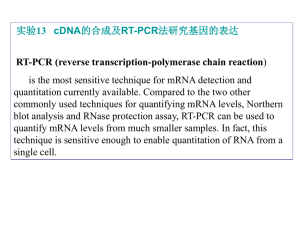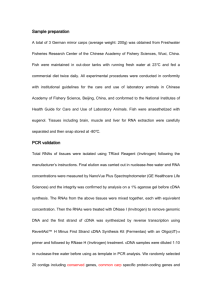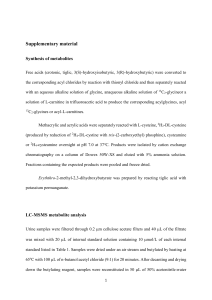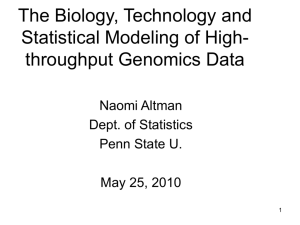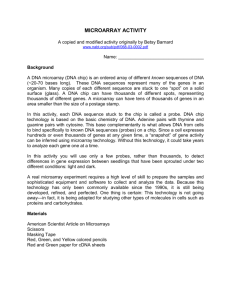Gene Expression Overview
advertisement
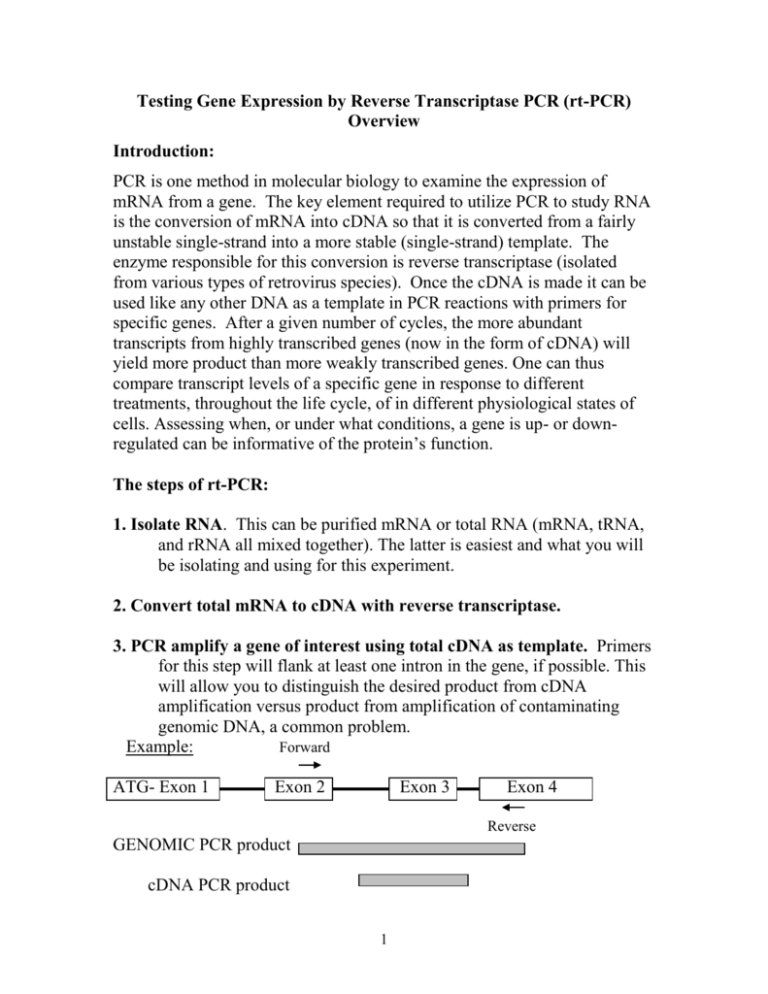
Testing Gene Expression by Reverse Transcriptase PCR (rt-PCR) Overview Introduction: PCR is one method in molecular biology to examine the expression of mRNA from a gene. The key element required to utilize PCR to study RNA is the conversion of mRNA into cDNA so that it is converted from a fairly unstable single-strand into a more stable (single-strand) template. The enzyme responsible for this conversion is reverse transcriptase (isolated from various types of retrovirus species). Once the cDNA is made it can be used like any other DNA as a template in PCR reactions with primers for specific genes. After a given number of cycles, the more abundant transcripts from highly transcribed genes (now in the form of cDNA) will yield more product than more weakly transcribed genes. One can thus compare transcript levels of a specific gene in response to different treatments, throughout the life cycle, of in different physiological states of cells. Assessing when, or under what conditions, a gene is up- or downregulated can be informative of the protein’s function. The steps of rt-PCR: 1. Isolate RNA. This can be purified mRNA or total RNA (mRNA, tRNA, and rRNA all mixed together). The latter is easiest and what you will be isolating and using for this experiment. 2. Convert total mRNA to cDNA with reverse transcriptase. 3. PCR amplify a gene of interest using total cDNA as template. Primers for this step will flank at least one intron in the gene, if possible. This will allow you to distinguish the desired product from cDNA amplification versus product from amplification of contaminating genomic DNA, a common problem. Example: Forward ATG- Exon 1 Exon 2 Exon 3 Exon 4 Reverse GENOMIC PCR product cDNA PCR product 1





